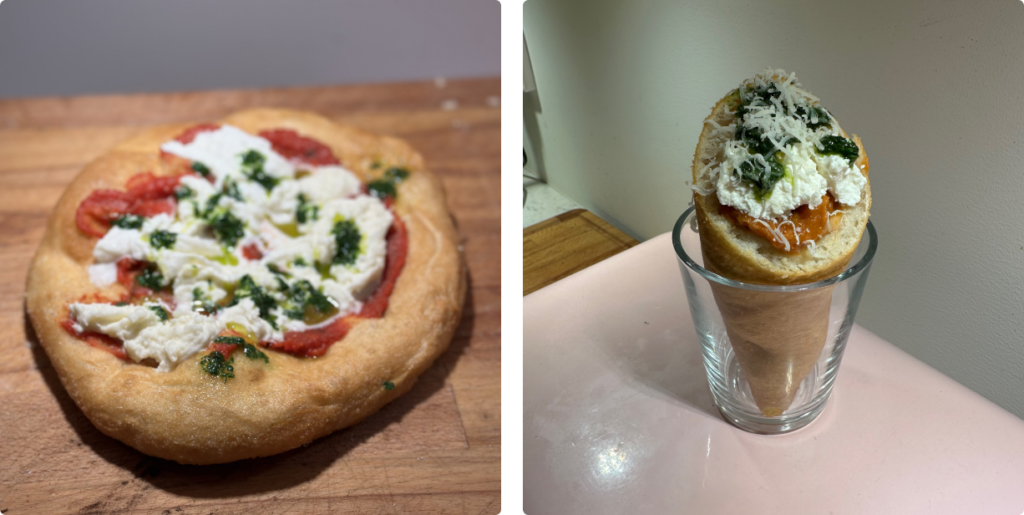For a few years now I have made pizza following this recipe and it's never failed me. I have baked the pizzas in a regular oven and in an Ooni. While the Ooni produces better looking pizzas, both are very tasty.
This specific post will see regular updates where I aim to, going forward, log standout topping combinations as well as new tips I learn over time.

Dough recipe - 2-3 pizzas depending on size
- 300g tipo 00 flour
- 200g water
- 8g salt
- 2-4g active dry yeast
- 4g EV olive oil
- Mix flours and salt in a large bowl
- In a smaller bowl, mix 200g lukewarm water, yeast, and olive oil. Stir it together.
- Mix the liquid contents into the flour mixture. Knead it for roughly 3 mins until combined. Let it rest for 15 minutes.
- Knead dough again for 3 min and cut into 2-3 pieces. Shape the pieces into balls so they are tight and springy.
- Put them in pre-floured containers and cover with plastic wrap or lids. They need space to grow, keep that in mind.
- Let them rise in the fridge for 24 hours. Take out 1h before you need to handle the dough.
For the baking process it depends on the oven you have. In a conventional oven the basic logic is as-hot-as-it-goes. Some modern ovens can go to different temperatures depending on settings. Mine goes to 300c on a specific grill setting, but not with any other setting.
A pizza stone is nice to have, if you don't have one then you can preheat an oven tray as well. Pizza steel is not something that I have an experience with so I cannot comment on that. What I do know is that the stone and steel need some time between bakes to properly regain heat.
Random pizza-making tips
- Remove moisture. This goes for the tomato sauce but also the mozzarella. I open up my mozzarella ahead of time and put them in a bowl to release some of their liquid. I find this especially important if you bake your pizzas in a normal oven as the mozzarella seems to have time to release more water.
- Consider the fat content of your toppings. Salsiccia and some salami will release a lot of fat that turns to liquid when in the oven.
- Higher protein flour is better to build up the gluten.
- Have a grate or something to put the pizzas on. The dough will release some steam and leaving it to rest on something so the bottom has access to air helps prevent soggy bottoms.
Toppings to try
- Artichoke cream base topped with mozzarella, sauteed spinach, browned butter, and bresaola crisps (make these ahead of time)
- "Margherita" with a base of oven roasted tomatoes and topped with burrata.
- Tomato sauce topped with mozzarella, 'nduja, blue cheese, and honey. I've sometimes added some grated orange peel to this instead of honey.
- Not a combination per se, but try to make some de-hydrated parmegiano to sprinkle on for a crisp texture
Pizza fritta
I have used this same dough to make pizza fritta. I wouldn't recommend that you make only pizza fritta, but having one to share as a starter can be a lot of fun as a variety. Especially if you make some trapizzino (pictured to the right below).

Apparently pizza fritta was more common in Italy than oven baked pizza. Not everyone could afford an oven, but everyone had a pan and some oil.
